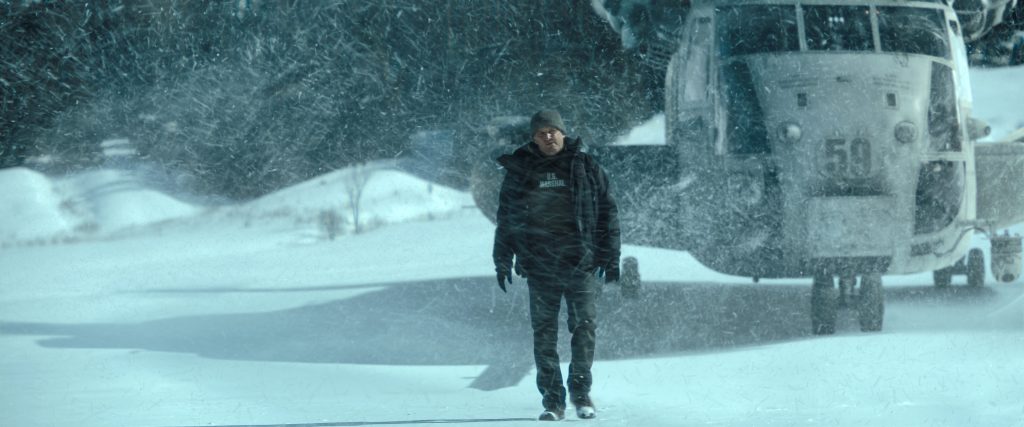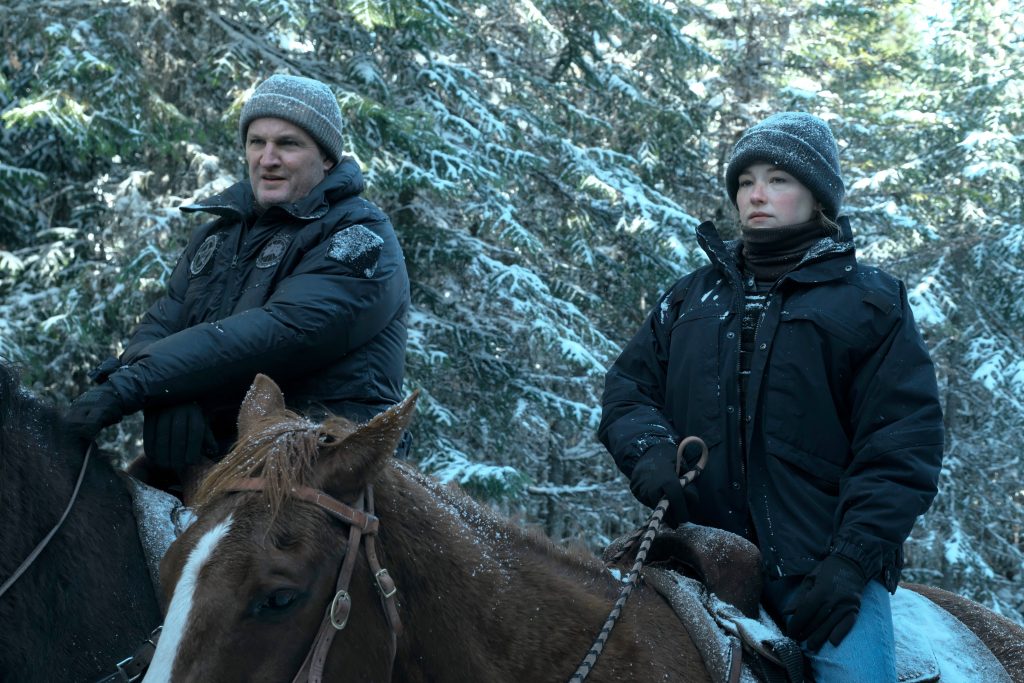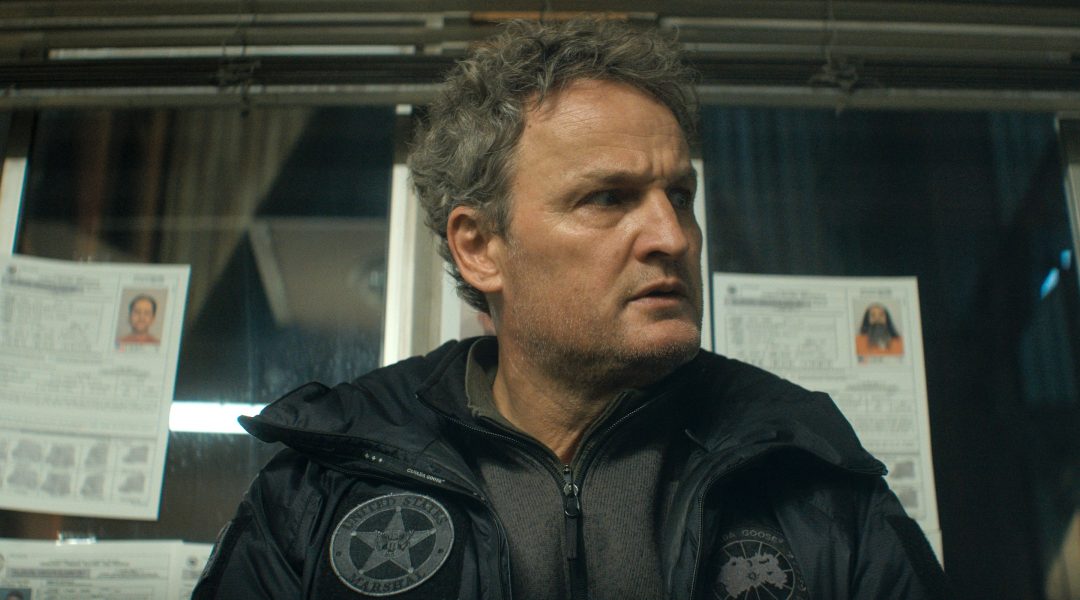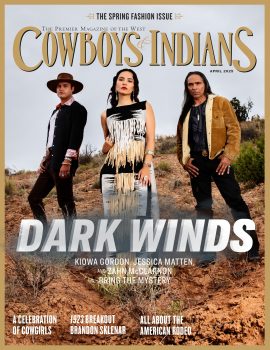We had to be extra careful about spoilers while discussing the gripping Apple TV+ series.
Must admit: While I was looking forward to chatting with Jason Clarke, star of the new Apple TV+ limited-run series The Last Frontier, it was more than a bit … well, challenging.
Please don’t misunderstand: The Australian-born actor — previously seen in such diverse movies as Zero Dark Thirty, Lawless, Chappaquiddick (as Sen. Ted Kennedy), and Oppenheimer — was nothing but gracious and forthcoming, amused to talk about his childhood as the son of a Queensland sheep-shearer and generous with compliments about his costars.
But when it came to specific questions about The Last Frontier, that’s when it became tricky. Indeed, while looking over the transcript of our conversation, I realized I couldn’t repeat some of the aforementioned compliments without spilling the beans about the characters those costars played.
Created by Jon Bokencamp (TV’s The Blacklist) and Richard D’Ovidio, The Last Frontier boasts a plot that is an absorbingly twisty and repeatedly surprising, littered with flashbacks that inform rather than confuse, and revelations that drive you to rethink everything you’ve previously assumed. It has something to do with a plane crash near Fairbanks, Alaska, something else to do with a manhunt led by local lawmen played by Clarke and Dallas Goldtooth, and yet another thing to do with an inquisitive CIA operative (Haley Bennett) who’s very, very interested in one of the possible survivors of the crash.
Perhaps the safest way to describe the 10-episode series, which premieres this weekend on Apple TV+, is to stick with the official logline:
“The Last Frontier follows Frank Remnick (Clarke), the lone U.S. marshal in charge of the quiet, rugged barrens of Alaska. Remnick’s jurisdiction is turned upside down when a prison transport plane crashes in the remote wilderness, setting free dozens of violent inmates. Tasked with protecting the town he’s vowed to keep safe, he begins to suspect the crash wasn’t an accident, but the first step of a well-crafted plan with far-reaching and devastating implications.”
Here are some highlights from my interview with Jason Clarke, edited for brevity and clarity — and an absolute minimum of spoilers.
Cowboys & Indians: With all due respect, I don’t want to start out with too much chitchat, because whenever I do, the person I’m interviewing must think I’m being polite because I really disliked their project. So let me go on record right at the start: I really enjoyed The Last Frontier.
Jason Clarke: Great, Joe. So did I, mate. I’m very proud of it. I loved making it. I love watching it, actually. I really enjoyed it.
C&I: To me, on one level it was like a nice juicy paperback that you would buy at the airport newsstand and devour during a transatlantic flight.
Clarke: Yep.
C&I: But I’ve got to be careful about asking questions, because I don’t want to give away too much of the story.
Clarke: Yeah.
C&I: But to me, the beating heart of the series is a pair of love stories.
Clarke: It is. Yeah, that’s a very good observation, mate. Well, you could even chuck a third love story in there, too.
C&I: At what point did you come into the project?
Clarke: I came in pretty early, when they had quite a few scripts already written — seven or eight, I think — and they were looking for someone to play the role. They still hadn’t worked out where it was going to shoot. They were breaking story on the other two [scripts]. But before we shot, I read the whole lot. Which is actually pretty rare nowadays. It’s one of those things that really helped in terms of knowing what I was going to have to do, knowing the size and the scope of the story, and also what I was committing to. All those things sealed the deal for me, really. As well as the people involved.
C&I: Now, I take it this was not shot in sequence.
Clarke: Oh, that’s exactly right. The whole series is set over 10 days in 10 episodes. And it’s winter in snow, so it was like we shot the craziest out-of-order schedule I’ve ever shot in my entire life. So you had to have the 10 scripts, because we were shooting literally everywhere. We shot all the exteriors and then we had to go to the interiors as much as we could. But at one point we ran out of snow, as you do before you're ready for it.
“We shot crazy out of sequence, dude. It was like you had to know exactly what was going on to get that right.” — Jason Clarke, The Last Frontier
C&I: Were there days on the set when you thought, “Okay, now do I know this about that person yet, or have I not been informed about that yet, or what?” Did you have to pause and collect your thoughts?
Clarke: Yes. Jon Bokenkamp was very particular about sticking to the script. He changed lines and different things, but it’s such a narrative-driven plot. I had to do a lot of work on the script to prepare. And because I was on almost every day, I was just constantly working — because I had to know this is going on here, that’s going on there, and this makes sense with that. We shot crazy out of sequence, dude. It was like you had to know exactly what was going on to get that right. I remember we had three units going at one time with three different directors.
C&I: I like the way that some things that are planted early on are echoed later. But we don’t realize the importance of them at first. Like when you’re giving hot chocolate to the boy who is found, and you say, “You've got to have marshmallows.” And then a couple of episodes later —again, I don’t want to spoil anything — you find out why marshmallows in hot chocolate are important to the man.
Clarke: Yeah. Actually, hot chocolate does make you feel better when you’re upset or stressed. J.K. Rowling got that right in the Harry Potter books. Jon wrote a lot of stuff that weaves in and out. Like, getting back to what we were talking about, I’d say the third love story is the community, the place that Frank and his family’s gone back to after a great tragedy and despair. It’s the place up in Fairbanks, in that community, which is what Frank loves so much and needs so much and wants to protect so much.

C&I: Now, again, I’ve got to be careful how I ask this, but — let’s put it this way: There is a scene where you are comforting a child who’s dying.
Clarke: Yeah.
C&I: And even while I was deeply moved by the scene, I found myself thinking: “My God, that must have been a difficult scene to shoot.” The emotional impact of the thing — and dealing with a very young actor who’s been told, “OK, you’re dying in this scene.”
Clarke: Yeah, it’s not pleasant to be rolling around in sticky blood and fake glass on a dirty road with a little girl. But you lean in to that by sticking with her, and building a relationship with her over the day or two days that we shot stuff with her. You see there my focus is always on her, and making sure that she’s in the right place, feeling good, feeling like she can just let it out rather than perform. I always like my other actors to feel like they’ve actually really given something of their day and enjoyed it, rather than just coming in and doing this song-and-dance routine. And that little girl was wonderful. I think you can see it on the screen there while I hold her. It’s a horrific moment. You can’t imagine. So I kept my focus on the child and taking care of her.
C&I: Along those same lines, I bought that you and Dallas Goldtooth as Hutch, Remnick’s second-in-command, really had been buddies for a while. In a lot of movies, you see characters who supposedly have been close friends for years and years, and you think, “You know, I’m not buying this.” How much time did you have to rehearse?
Clarke: Not a whole lot. Because my shooting schedule was pretty crazy. There aren’t many sections where I’m not on the screen there. We’d run lines with each other because there were so many lines to memorize, but on the day we’d work it out. But, look, we shot for eight months. And Dallas and I just bonded really well. We went out to dinner a couple of times before we shot. We have mutual friends as well. And he’s a man that I related to quite easily.
“We couldn’t afford any mistakes. I almost got knocked out on the hard snow there. And you want to get it right.” — Jason Clarke
C&I: I think it’s safe to say your character goes to several emotional extremes in this.
Clarke: [Laughs] Yes. It is safe to say, Joe.
C&I: What was the toughest nut for you to crack? What was the scene that, when you saw it on the call sheet, you thought: “Oh, we’ve got to do that tomorrow. Okay. I guess I can't call in sick.”
Clarke: No, you never call in sick. Lord, bless me. But there were a few scenes like that. Like that scene early on with an actor named Prince Amponash. He plays the convict who has been horribly burned, and has lost his arms, and knows where my wife is. Or at least I think he knows. That scene was really tough because we were just stuck inside the studio all day long. It was a very confrontational scene with Prince doing that scene.
And then some of the other ones with the big stunts outside. Like that one when I get off the helicopter and have a fight in the cold. And then we get on the helicopter at the end of the scene. That was very intense because it was minus 25 — plus we had windshear on top of that. And it was a very complicated maneuver between cameras and actors. We couldn’t afford any mistakes. I almost got knocked out on the hard snow there. And you want to get it right. You feel great at the end of it. But to shoot it was exhausting. Oh my God. It’s a long six-and-a-half-minute, seven-minute fight, with a helicopter that then takes off at the end. And the shot ends when you see the other stunt guy get kicked off, where I boot him out of the helicopter.
C&I: OK, I have to ask: Was that you driving the dogsled or …
Clarke: [Laughs] That was me, Joe. Yeah. I did a bit of practice, and I’d done it before when I’d been up in Alaska years ago, actually. Where it’s just you going through the snow silently with these beautiful hounds. And you've got these 8,000-foot peaks behind you. It was fantastic.
C&I: Did you have to bond with the dogs before the scene?
Clarke: Yeah, a little bit. But the trainer showed me how to control them. It looks simple to control that sled, but it’s not. Particularly down a big left-hand curve. You get your lean. I had one time where I’d almost become a serious cropper. The rule of thumb is never let go of the sled.

C&I: Finally, I was looking over your credits, and I don’t think you’ve had much experience on horseback.
Clarke: Not a whole lot on film. No. Well, Joe, it looked like I knew what I was doing, didn’t it?
C&: Oh, yes. That’s what I was leading up to. You looked like, “Yeah, I’m riding around in the snow. No biggie.”
Clarke: In real life, though, I’ve had lots of experience on horseback. Back in the day, I used to ride along with my dad to go sheep-shearing. And I’d go with friends, friends that had cattle ranches in Australia. I used to muster cattle on horseback with them. See, they’re beautiful animals. I love to ride a horse. I’d like to be a bit better. It’s a very different beast when you’re going to do it for cameras. Maybe for Season 2, if there’s horse riding, I think I’m going to have to do a lot more.
C&I: So we can look forward to a second season. Because, one more time, I’ve got to be careful about how I phrase this, but the door is left open.
Clarke: Yeah, the door is open. Hopefully, if all the stars align in the next couple of months, we’ll be filming one.














